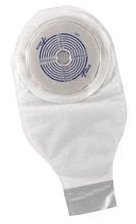Colostomy management can seem daunting at first. A person who has just received a colostomy might not know how to deal with the colostomy dressings and colostomy bags that are now part oft their lives, either temporarily or permanently.
Even a caregiver might find the process difficult or off-putting. But learning the basics of colostomy management can free someone from being dependent on around the clock nurses and other health care professionals, and allow them to live a more normal life.
Importance of Colostomy Management
Fortunately, there are no hard and fast rules when it comes to colostomy management. The goal is to keep the patient from soiling themselves and for them to eventually feel comfortable and competent in using colostomy. Colostomy management also allows them to control at least some aspects of their bowel movements as well as the flatulence and odors that sometimes accompanies them. This is especially beneficial in a home environment where the patient must live among other people who might not be trained medical professionals.
It is also important for the patient to know the difference between the bowel movements that happen with a transverse colostomy and with a sigmoid colostomy. The sigmoid colostomy is a bit more controllable than the transverse colostomy. Some patients with a sigmoid colostomy have become so practiced at controlling their bowel movements that they find they do not have to wear colostomy pouches all the time. Though the colostomy opening does not have the sphincter muscles that control when the bowel passes, the sigmoid colostomy patient finds that if they eat at a certain time of day they can expect and predict the bowel movement at a manageable time later. Transverse colostomy patients do not have this sort of control. The stool is also looser than with sigmoid colostomy patients.
 Colostomy management can help protect the skin around the opening of the colostomy. This is especially helpful in patients with transverse colostomies. They will learn to use skin barrier openings and pouches that are the right size. They will also learn to change their pouching system often, which will also cut down on irritation. They can also use patches to test if they’re allergic to any aspect of their colostomy.
Colostomy management can help protect the skin around the opening of the colostomy. This is especially helpful in patients with transverse colostomies. They will learn to use skin barrier openings and pouches that are the right size. They will also learn to change their pouching system often, which will also cut down on irritation. They can also use patches to test if they’re allergic to any aspect of their colostomy.
Patients who have colostomies must make sure that they have the supplies to keep up their colostomy management, including skin barriers and irrigation equipment. They should order their supplies several weeks before they’re needed to make sure they have them on hand. A patient can spend up to $200.00 or more for each order of colostomy supplies, but their health insurer should cover at least some of it.
